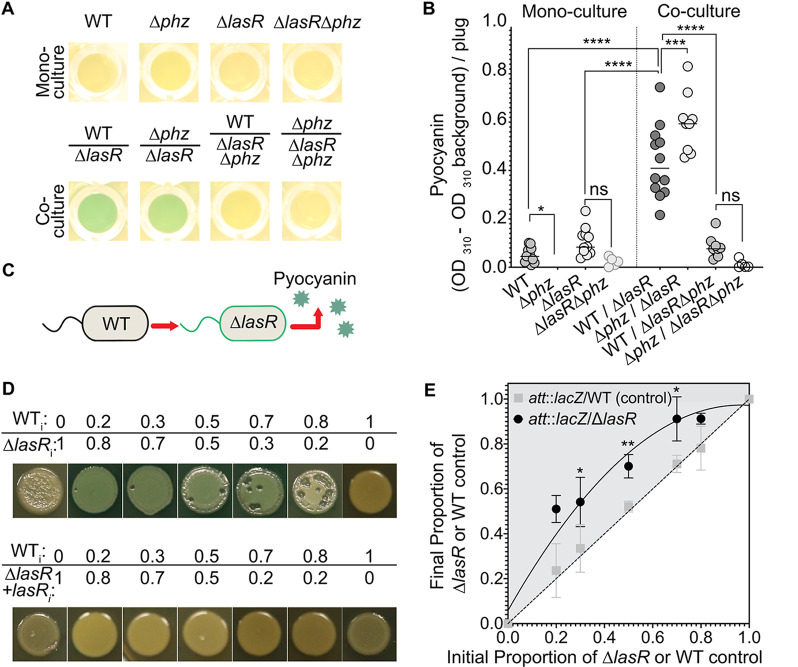FIG 1.
The ∆lasR strain produces pyocyanin in wild-type/∆lasR cocultures beyond monoculture concentrations. (A) Representative images of the wild-type (WT) and ∆lasR strains and their phenazine-deficient derivatives (∆phz strains) visualized from the bottom of a 96-well LB agar plate after 16 h growth as mono- and cocultures with 70:30 WT-to-∆lasR cell initial ratio. (B) Pyocyanin levels above background, defined as the average signal for the ∆lasR ∆phz strain, quantified for cultures described in panel A. ns, not significant; *, P < 0.05; ***, P < 0.0005; ****, P < 0.0001, as determined by ordinary one-way analysis of variance with Tukey’s multiple-comparison test for n ≥ 8 replicates on three different days. (C) Model of pyocyanin production by the ∆lasR strain in coculture with the WT. (D) Representative pyocyanin production of the wild type cocultured with the ∆lasR strain or the ∆lasR strain complemented with the lasR gene at the native locus (∆lasR + lasR strain) across several initial (designated by the subscript i) proportions on LB medium for 20 h. Three biological replicates were included in at least 3 independent experiments. (E) Average final proportion of 3 replicate colony biofilms quantified after 16 h growth for the WT strain and the ∆lasR strain cocultured with a WT strain tagged with lacZ in 3 independent experiments. Experimental setup was as described in panel D. *, P < 0.05; **, P < 0.005, as determined by two-tailed t tests of paired ratios between att::lacZ/WT (control) and att::lacZ/∆lasR cocultures at each initial ratio. All results that reach significance are marked.

